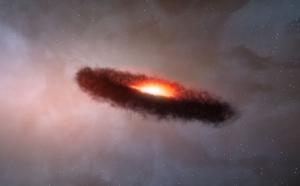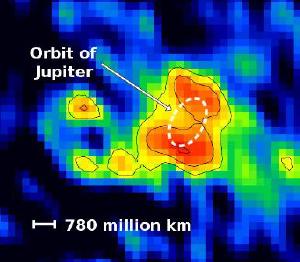Blog
Dusty Scales
6 July 2015
 ALMA (ESO/NAOJ/NRAO)/M. Kornmesser (ESO)
ALMA (ESO/NAOJ/NRAO)/M. Kornmesser (ESO)One of the reasons radio observatories such as ALMA and others are so useful is that different wavelengths of radio emissions let us tune in on different sizes of dust grains in the universe. That’s because dust grains tend to emit radio signals with wavelengths around their own size. This fact allows us to study the types of dust being formed in early planetary systems.
 J. Greaves, et al
J. Greaves, et alFor example, recent observations from ALMA found millimeter-sized dust grains orbiting a brown dwarf star known as Rho Ophiuchi 102.1 This is somewhat surprising, since it would imply that clouds around small brown dwarfs are similar to dust clouds around larger stars. It also suggests that brown dwarfs may form rocky planets. Another team using the e-Merlin array found somewhat larger grains around the star DG Tauri. Despite the limited resolution, it is clear that a dust belt has formed around the young star.
What these observations show is that protoplanetary disks are not only common around stars, but that dust seems to be present early on. It’s one more clue pointing to the idea that planets are the norm rather than the exception for stars in our universe.
Ricci, L., et al. “ALMA observations of ρ-Oph 102: Grain growth and molecular gas in the disk around a young brown dwarf.” The Astrophysical Journal Letters 761.2 (2012): L20. ↩︎